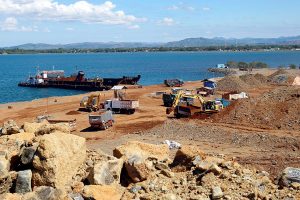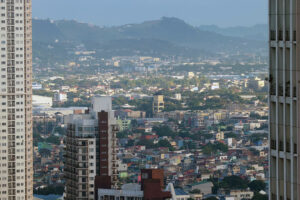THE MINING INDUSTRY would prefer the imposition of a margin-based royalty and windfall profits tax, as it would still generate revenues for the government but less burdensome for miners.
Chamber of Mines of the Philippines Vice Chairman Gerard H. Brimo said in a Viber message theses taxes would provide the government “with a progressively larger share in mining revenues when commodities prices go up and give a break to the industry when prices are low.”
The Department of Finance (DoF) wants Congress to prioritize a measure rationalizing the fiscal regime for the mining sector, as it seeks to generate additional revenues for the government.
Mr. Brimo said the industry supports House Bill No. 373, which is authored by House Ways and Means Committee Chairman and Albay Rep. Jose Maria Clemente S. Salceda. The bill proposes a margin-based royalty on large-scale miners outside of mineral reservations. It also proposes a windfall profits tax that is likewise based on margins.
Basing the tax on margins means that the rate increases as operating margins increase.
Mr. Brimo said that margin-based royalty is practiced in many other countries.
“This is the same tax structure that applies in the two largest copper producing countries in the world, Chile and Peru, who have been able to attract substantial foreign investments to grow their industries. Canada also applies an income-based royalty although the royalty rate does not change,” he said.
Currently, the House Committee on Ways and Means is currently discussing the proposed new mining fiscal regime.
Under the latest version of the substitute bill, large-scale miners operating within reservations will be subject to a royalty of 5% of the market value of the gross output of their operations.
Meanwhile, the rates for large-scale miners outside mineral reservations will be subject to a margin-based royalty on income from their operations. For instance, miners earning margins of 1% to 10% will pay a royalty of 1%, while those with margins above 10-20% will pay 1.5%, and so on.
On the other hand, small-scale mines will pay a royalty of 2% of the market value of the gross output of their operations.
Meanwhile, the bill also seeks to impose a windfall profits tax based on their income from operations. For instance, those with margins of more than 35% up to 40% will pay a rate of 0.5%.
During a House Ways and Means Committee meeting in May, the Finance department also proposed to impose a royalty of 3% on the market value of gross output of large-scale mining operations outside mineral reservations.
Mr. Brimo said the country’s current mining regime is “regressive” due to the taxes being imposed based on gross sales revenue.
Citing a study by Deloitte’s financial advisory group, he noted it recommended that the Philippines adopt an income-based royalty with rates tied to operating margins. “The report also mentioned that for the tax regime to be competitive, the combined tax impositions on the industry should not exceed 5% of gross revenues or output,” he added.
Mr. Brimo said that the excise tax on mineral products is “already substantial.”
Under the Tax Reform for Acceleration and Inclusion Law, the mining excise tax rate was increased to 4% from 2%.
“The Philippine large-scale mining industry is already taxed higher than bigger mining countries such as Indonesia, the world’s top nickel producer, as well as Peru and Chile,” he added.
Dante R. Bravo, president of Global Ferronickel Holdings, Inc., also said that the current mining fiscal regime is “heavy” on the industry.
“In any event, we believe that the government should always pursue a constitutionally progressive system of taxation based on net income, rather than based on gross revenues,” he said in a text message.
To support the growth of the mining sector, Mr. Brimo said that the government must implement a progressive tax structure that encourages investments.
“While the current tax structure is already more expensive than Indonesia, our closest competitor, as well as the two top copper producers in the world, the introduction of an income-based royalty tied to operating margins for those outside mineral reservations as well as the windfall profits tax at least makes the increase more palatable and the overall mining tax structure not woefully uncompetitive,” he added.
Meanwhile, Eleanor L. Roque, tax principal of P&A Grant Thornton, said that the mining fiscal regime should also require miners to conduct their processing within the country.
“We have a lot of natural resources that are mined and once they are mined, they are lost forever, so we should ensure that our country gets the maximum possible benefits while at the same time making it economically viable to the investors,” she said in a Viber message.
“If we export processed and high-value products, the Philippine companies will also be able to recognize higher income and therefore, pay higher taxes. Processing here will also increase investments here in the Philippines and allow transfer of technology,” she added.
Data from the DoF showed that rationalizing the fiscal regime would generate P12.4 billion in revenues in 2025, P12.9 billion in 2026, P13.4 billion in 2027, and P13.9 billion in 2028. — Luisa Maria Jacinta C. Jocson






